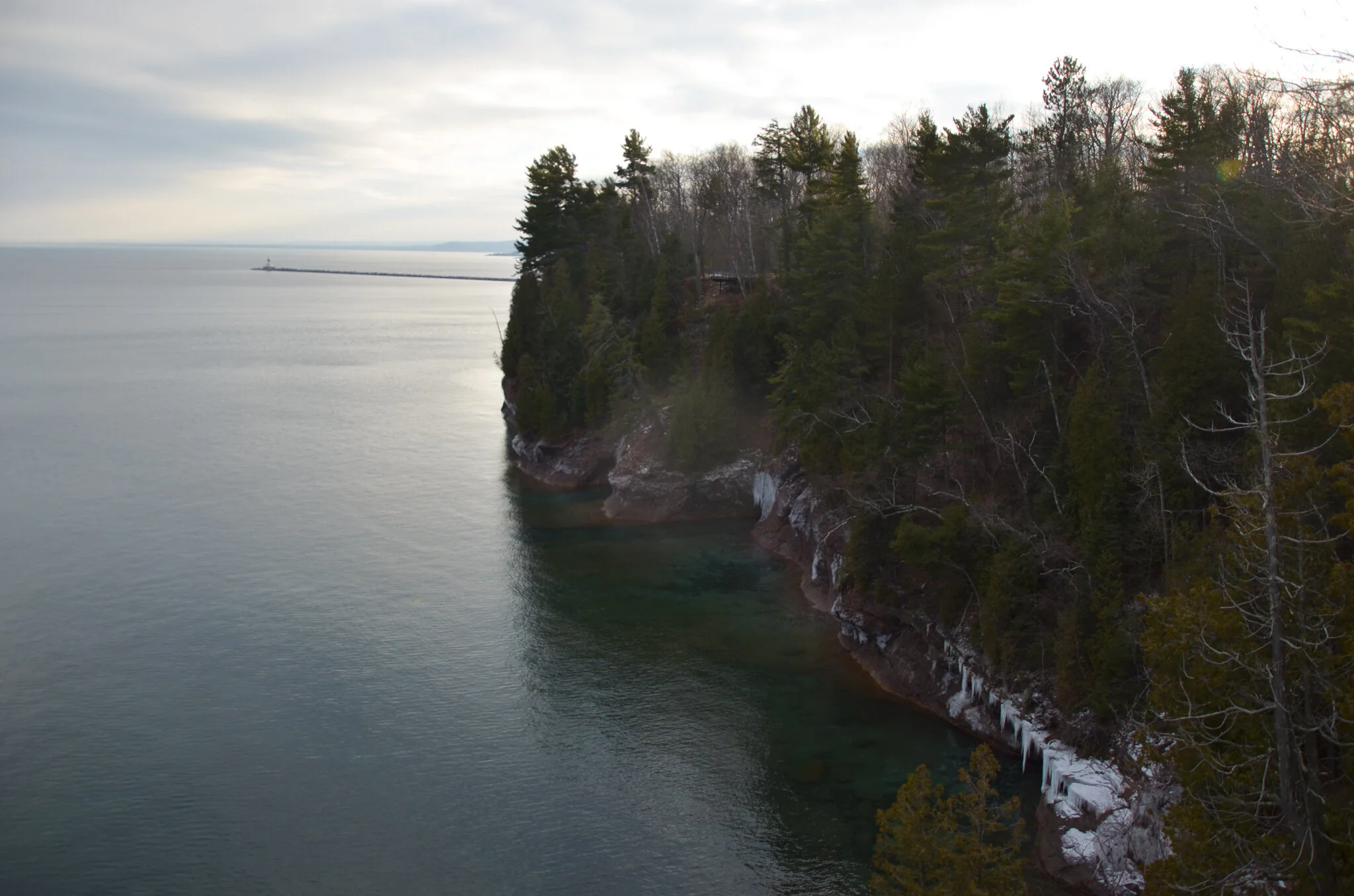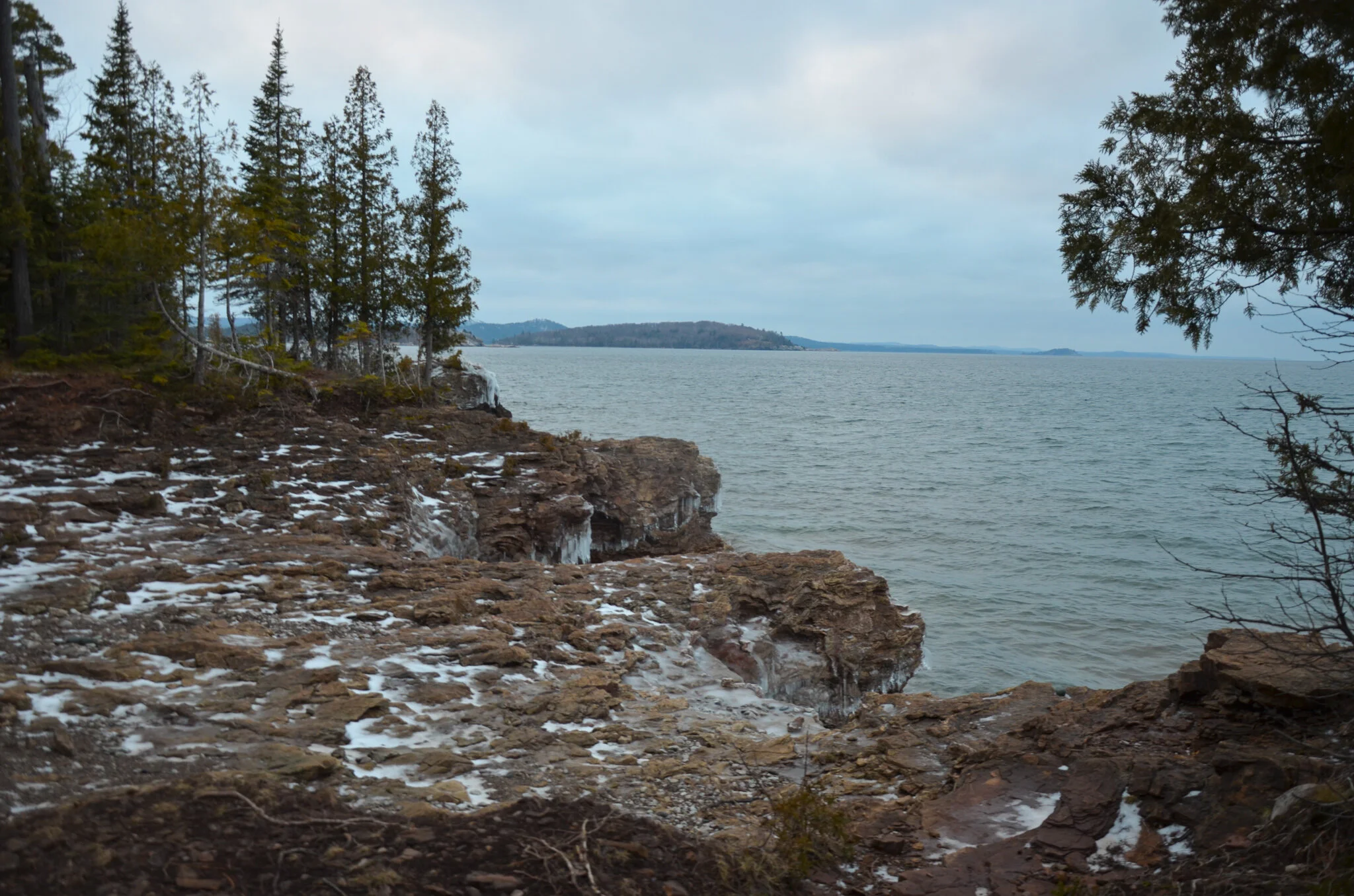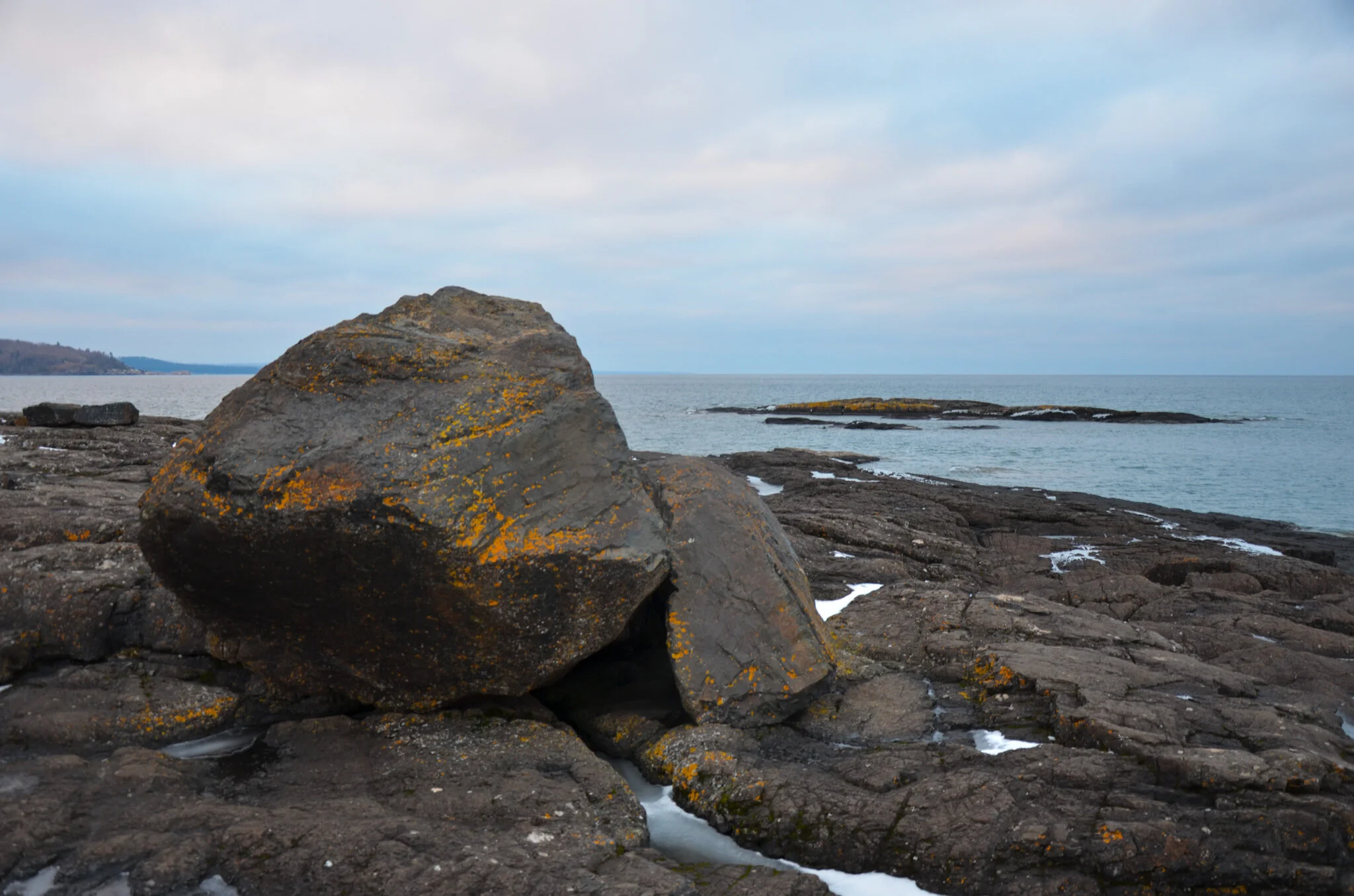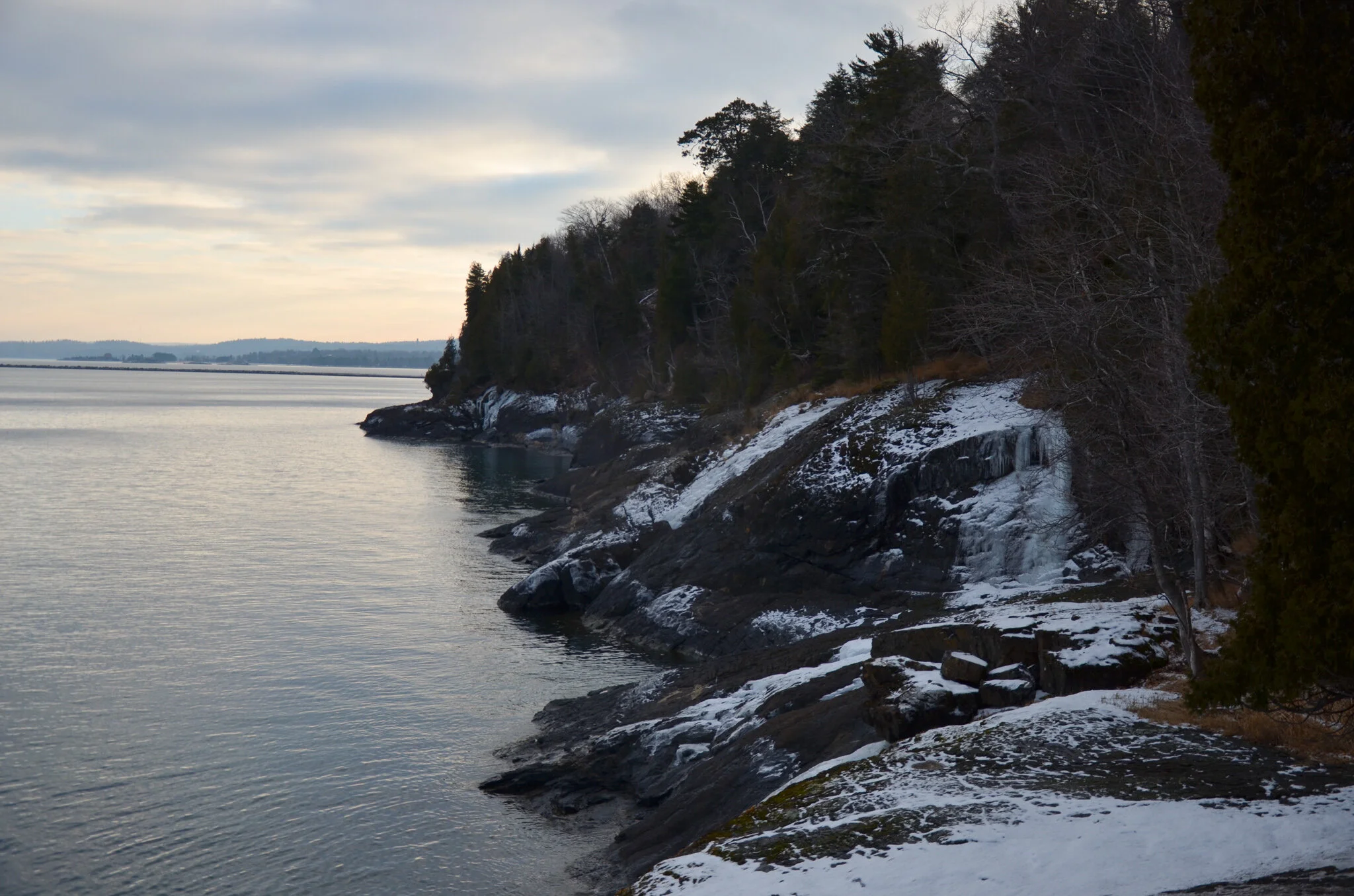What’s out there: Presque Isle
“An austere peninsula jutting into Lake Superior, this land had been inhabited by native tribes for as long as 7,000 years prior to the arrival of Jesuit settlers, who named it ‘almost island.’ The 323-acre oval shaped site has operated as a public park since the mid-1880s, when the U.S. Congress transferred land ownership to the City of Marquette, MI. Following a visit to Presque Isle in 1891, Frederick Law Olmsted, Sr. noted to a local park commissioner that the site should not be ‘marred by the intrusion of artificial objects, and especially of constructions in the least of a showy character.’ Deeming the natural landscape ‘exceedingly interesting, beautiful and picturesque,’ Olmsted set the precedent for maintaining Presque Isle in its natural setting.”




I traveled to Marquette, MI, to research an entry into the Cultural Landscape Foundation’s quintessential database of significant places, What’s Out There. Marquette is sited on the shores of Lake Superior, a remote town founded in its current form by French traders and animated by generations of lumber and iron ore workers. Prior to European settlement, the area had been continuously inhabited by Ojibwe and other indigenous people.
Frederick Law Olmsted is said to have designed Marquette’s largest public park, an “almost island” beloved by residents and tourists. My entry corrects the official record: Olmsted’s involvement was limited to a brief note urging local park commissioners to leave Presque Isle untouched. The influence of that note, however, has been lasting.
The What’s Out There piece comes to life thanks to photography by the insanely talented Marquette-based visual artist Leora Tadgerson.
A longer, chattier story is forthcoming on the Cultural Landscape Foundation blog:
An austere urban wild jutting out into Lake Superior, Presque Isle — or “almost island” in French — was so named by Jesuit explorers who prospected these northern reaches for natural resources and trade. There is material evidence that the site had been inhabited by native tribes for as long as 7,000 years prior to white settlers; its last permanent residents — Ojibwa elder Charlie Kawbawgam and his wife Charlotte — died on the island in the first decade of the 20th century. A simple boulder marks their gravesites. The modest 320-acre site has operated as a public park since 1886, when prominent resident and one-time state representative Peter White lobbied U.S. Congress to introduce a bill transferring ownership from a federal lighthouse agency to the City of Marquette. A tireless park booster, he also raised funds for an access road to Presque Isle and a special officer to ensure that “ladies and children will be protected from annoyance while at the park.” White would go on to serve on Marquettes’s parks commission, on whose behalf he wrote to Frederick Law Olmsted for his “impressions — how it struck you?” Olmsted had paid a visit to Marquette in 1891 for another commission and toured Presque Isle. Its natural advantages, Olmsted responded in a letter, should not be “marred by the intrusion of artificial objects, and especially of constructions in the least of a showy character.” He may have found the “exceedingly interesting, beautiful and picturesque elements of local scenery” of Presque Isle in stark opposition to the fairgrounds of Chicago’s Columbian World’s Exposition, with which he was then preoccupied, whose interest and beauty had to be painstakingly manufactured.
Olmsted’s return letter to White set a design and management philosophy that, though periodically contested over the years, continues to guide the development of Presque Isle: do as little as possible. It was elaborated in a follow-up 1896 report prepared by John C. Olmsted, which advises that no rail, public amusements, structures, or other “conspicuous elements” ought to interfere with the character of the park. “Preserve it, treasure it as little altered as may be for all time,” the document reads, perhaps a bit disingenuously, since it goes on to suggest a circular road, steamship docks, and the addition of a considerable landmass. (Of those, only the circular drive — a gentle loop of three or so miles — was built.) In 1917, the landscape firm of George Lister Nason was contracted by the City to draw up plans for amenities such as sports fields, cafes, children’s play areas, and a “bathing lagoon.” In wartime U.S., these plans went happily unimplemented.
Another unexpected champion of preserving Presque Isle — announced in the local gossip column as “Jens Jensen, famous landscape architect” — turned up in Marquette in 1936. Jensen had been working on a nearby site when he heard about the “wrong-headedness” of civic leaders who would “flirt with the idea of the introduction of any changes that would give the island any least semblance of sophisticated formality.” He is reported to have praised the park as a “shrine of natural beauty to be sedulously maintained as such.” Again, when proposals surfaced to add formal gardens and a grand lawn to the site in the mid-’60s, preservationists invoked the 1896 Olmsted, Olmsted & Eliot report and its proscriptions against overdevelopment.
Cole Porter, who occasionally spent summers in Marquette, was said to be so taken by the site -- and the spirit of civic abundance it represented -- that Presque Isle served as the inspiration for the song “What a Nice Municipal Park,” included in the musical Jubilee. Though Porter’s park is relocated to a fictional European kingdom, some of its features and a sense of scale that’s “not too big yet not too small” are recognizable.
Today, Presque Isle remains mostly preserved as a wild, populated by herds of deer and songbirds, surrounded by dangerous currents. Aside from a seasonal concession stand and a municipal marina, few artifices intrude. In summer, visitors crowd the small beach on the peninsula’s southern shore and hike up black-rock cliffs that rise from the fiercest of the Great Lakes.
